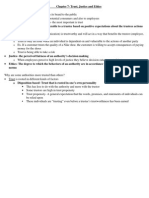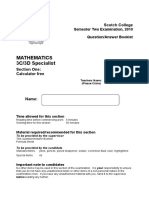0% found this document useful (0 votes)
15 views2 pagesDefinition of Machine Learning
Machine Learning (ML) is a branch of Artificial Intelligence that enables systems to learn from data and make predictions without explicit programming. It includes three main types: Supervised Learning, which uses labeled data to predict outcomes; Unsupervised Learning, which identifies patterns in unlabeled data; and Reinforcement Learning, where models learn through interaction with an environment. The document also provides practical programming examples for each type to illustrate their application.
Uploaded by
Sajid HussainCopyright
© © All Rights Reserved
We take content rights seriously. If you suspect this is your content, claim it here.
Available Formats
Download as PDF, TXT or read online on Scribd
0% found this document useful (0 votes)
15 views2 pagesDefinition of Machine Learning
Machine Learning (ML) is a branch of Artificial Intelligence that enables systems to learn from data and make predictions without explicit programming. It includes three main types: Supervised Learning, which uses labeled data to predict outcomes; Unsupervised Learning, which identifies patterns in unlabeled data; and Reinforcement Learning, where models learn through interaction with an environment. The document also provides practical programming examples for each type to illustrate their application.
Uploaded by
Sajid HussainCopyright
© © All Rights Reserved
We take content rights seriously. If you suspect this is your content, claim it here.
Available Formats
Download as PDF, TXT or read online on Scribd
/ 2































































































